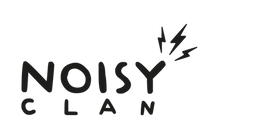The world of guitar playing is a vast and beautiful landscape filled with endless possibilities (and sometimes, little hurdles). One of the fundamental building blocks of this musical journey is learning to play chords on the fretboard. But even more so, it is vital to understand why certain chords sound great together.
Fretboard Anatomy
(you can skip this if you already know this terminology)
Frets: The fretboard has metal strips embedded into it, running perpendicular to the neck. These metal strips indicate the fret divisions. Frets divide the fretboard into distinct segments, and each fret represents a different note.
Fun Fact: Many people think the fret is the metal line, but actually it is the space within each dividing line! See the diagram below.
Strings: Guitars usually have six strings that run parallel to the fretboard. They are typically made of steel or nylon. Each string is tuned to a specific note, with the thickest string (the lowest in pitch) typically tuned to E and the thinnest string (the highest in pitch) tuned to E as well. The other strings are tuned to A, D, G, and B.

Chords: Time to open the can of worms …
A Quick Rundown of the Basics:
Major Chords: Typically described as happy chords, a major triad is made up of the root, the 3rd and the 5th.
Minor Chords: These have a root, a minor third and a perfect fifth. Unlike major chords, minor chords are considered to sound ‘sad’.
Power Chords (a dyad): uses two notes only - the root and the 5th. They are movable, easy to play and can be substituted in place of major and minor chords to make hard chord progressions easier.
Diminished Chords: in a diminished triad the 3rd and 5th notes are flattened by one semitone, creating a dissonant sound.
1. Triads - The Foundation of Harmony
Triads are the basic building blocks of chords, consisting of three notes played simultaneously. These notes are made up of the root, third, and fifth of a given scale. Triads come in different types, such as major, minor and diminished.
For example: To create a C major triad. We start with our root note C, we move up by an interval of a 3rd to E, and then by another interval of a 3rd to G.

A great example of this is “Sultans of Swing” by Dire Straits.
This is a pretty handy YouTube video which visually displays each triad as it is played throughout the song.
2. Power Chords - The Rock and Roll Staple
Power chords are a staple in rock and roll and punk music (but not exclusively to). Unlike triads, power chords consist of only two notes: the root and the fifth. This simplicity gives them a raw and powerful sound.
Power chords give us a simple chord shape that unlocks the rest of the guitar neck, letting budding guitarists access chords that can’t be played in the open position.
For example the F#, and C# chord:

Now for the epitome of power chord examples:
"Smells Like Teen Spirit" by Nirvana
Nirvana's "Smells Like Teen Spirit" is a grunge anthem known for its aggressive energy. The chorus is constructed through power chords, particularly the F5, Bb5, and Ab5 chords. If you played the song with full chords it wouldn’t be quite as ‘full’, it would sound gentler and ‘less aggressive’.
Also, an honourable mention goes out to Status Quo. They also LOVE a power chord.
3. Expanding Your Chord Vocabulary
Whilst triads and power chords are vital and great starting points, if you really want to expand your vocabulary… let’s add more flavour! The following are just a few ways to really spice up your chord playing and even open up the fretboard:
A suspended chord is a musical chord in which the third is omitted and replaced with a perfect fourth or a major second:
Sus2: The Sus2 chord, also known as the suspended 2nd chord, is created by substituting the third note of a standard chord with the second note. For instance, in the case of a C sus2 chord, you would have the notes C, D, and G.
Sus4: The Sus4 chord, which (not so surprisingly) stands for suspended 4th chord, involves replacing the third note of a regular chord with the fourth note. For example, in the context of a C sus4 chord, the notes would be C, F, and G.
Augmented: Unlike most chords, which consist of various combinations of stacked major and minor 3rds, an Augmented Chord is unique because it comprises two successive major 3rds.
To illustrate, consider the C major chord mentioned earlier, which has a Major 3rd interval from C to E and then a minor 3rd from E to G. If we were to transform this chord into an augmented chord, we would need to replace the E to G minor 3rd interval with a major 3rd. This entails raising the G to G#. Consequently, a C Augmented Chord is composed of the notes C, E, and G#.
Add9: The add9 chord is essentially a major or minor triad with an additional note, known as "the 9th," included. The 9th of a chord is the note located two frets above the root note.
I haven’t even mentioned 7th Chords or the Dominant 7th (among many others) … So I guess that could be some homework for you.. sorry not sorry!
So, this is just the beginning for you guitar folk, the best is yet to come! Playing chords on the fretboard is an essential skill for any guitarist, whether you're a beginner or a seasoned player. Triads and power chords (and all the other chords) serve as the foundation of countless songs across various genres. By studying and mastering these chord types, you can unlock the potential to play not only iconic songs but also to create your own unique musical expressions.
So, pick up your guitar, start practising those chords, and let your musical journey begin. Remember, even the most legendary guitarists started with these fundamental building blocks!
Happy Playing!
Check out our FREE chord chart to get you started.








